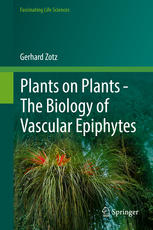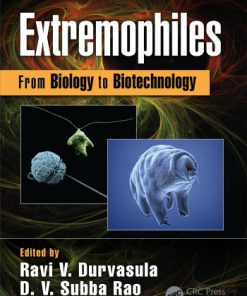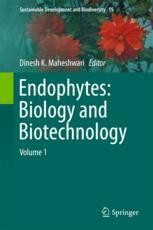Fiber Plants Biology Biotechnology and Applications 1st Edition by Ramawat, Ahuja 3319445700 9783319445700
$50.00 Original price was: $50.00.$25.00Current price is: $25.00.
Fiber Plants Biology Biotechnology and Applications 1st Edition by K.G. Ramawat, M. R. Ahuja – Ebook PDF Instant Download/Delivery: 3319445700, 9783319445700
Full download Fiber Plants Biology Biotechnology and Applications 1st Edition after payment

Product details:
ISBN 10: 3319445700
ISBN 13: 9783319445700
Author: K.G. Ramawat, M. R. Ahuja
Fiber Plants Biology Biotechnology and Applications 1st Table of contents:
1 Fiber Plants: An Overview
Abstract
1.1 Introduction
1.2 Fiber and Fabrics from Historical Perspective
1.3 Major Fiber Plants
1.4 Lesser Known Fiber Plants
1.5 Biodiversity of Fiber Plants
1.6 Biotechnological Approaches
1.7 Applications of Fiber
1.8 Conclusions
References
2 The Global Importance of Transgenic Cotton
Abstract
2.1 Historical Perspective
2.2 Initial Traits and Trait Development
2.3 Global Adoption Is Driven by Benefits
2.4 Trait Pipeline
2.5 Preserving Genetic Diversity
2.6 An Inconvenient Truth
2.7 Back to the Future
References
3 Natural Cellulose Fiber from Mendong Grass (Fimbristylis globulosa)
Abstract
3.1 Introduction
3.2 Biology of Mendong Grass (Fimbristylis globulosa)
3.2.1 Taxonomy
3.2.2 Ecology
3.2.3 Morphology and Structure
3.3 Mendong Fiber Properties
3.3.1 Chemical Composition
3.3.2 Physical Properties
3.3.3 Mechanical Properties
3.3.4 Thermal Properties
3.4 Mendong Grass Utilization
3.4.1 Mendong Grass as Phytoremediation Plant
3.4.2 Mendong Straw as Craft Material
3.4.3 Mendong Fiber as Reinforcement in the Polymer Composite
3.4.4 Mendong Fiber as Source of Microcrystalline Cellulose
3.5 Conclusion
Acknowledgments
References
4 Sanseviera zeylanica (L.) Willd and Its Potential as a New Natural Source Fiber: A Case Study from
Abstract
4.1 Introduction
4.2 Taxonomy and Systematics
4.3 Hammock Production
4.3.1 Harvesting of Leaves
4.3.2 Extraction of the Raw Fiber
4.3.3 Corked or Braid of the Fiber
4.3.4 Dyeing
4.3.5 Warping of the Hammock
4.4 Conclusions
Acknowledgments
References
5 Linen and Its Wet Processing
Abstract
5.1 Introduction
5.2 Historical Background
5.3 Flax Cultivation and Harvest
5.4 Morphological Aspects of Plant
5.5 Fiber Extraction
5.5.1 Dew Retting
5.5.2 Water Retting
5.5.3 Chemical Retting
5.5.4 Enzyme Retting
5.6 Properties and Behavior of Flax
5.6.1 Tensile Strength
5.6.2 Elasticity and Elongation
5.6.3 Moisture Regain
5.6.4 Stability to Heat and Light
5.6.5 Effect of Chemicals
5.6.6 Technical Qualities
5.7 Chemical Composition
5.7.1 Lignin
5.7.2 Hemicellulose
5.8 Preparatory Chemical Processing
5.8.1 Scouring
5.8.2 Bleaching
5.8.3 Mercerization
5.9 Dyeing
5.10 Finishing
5.11 Use of Enzymes
5.12 Conclusion
References
Biotechnology
6 Cotton Regeneration In Vitro
Abstract
6.1 Introduction
6.1.1 Economic Importance
6.1.2 Domestication
6.1.3 Taxonomy and Cytological Features
6.2 Regeneration Systems
6.2.1 Callus-Based Regeneration
6.2.1.1 Genotype
6.2.1.2 Explant Type
6.2.1.3 Growth Regulators, Carbohydrate Source, and Environmental Conditions
6.2.2 Multiplication of Zygotic Embryo or Shoot Meristems
References
7 Plant Cell, Tissue, and Organ Culture Approaches to Explore the Functional Cell Differentiation in
Abstract
7.1 Introduction
7.2 PCTOC Approaches for Understanding Plant Cell Wall Formation, General Information
7.2.1 Identification of Regulatory Factors of Xylem Cells Formation via the Zinnia Model
7.2.2 Molecular Information for Xylem Cell Formation via Model Plants
7.3 Classification and Characterization of Bamboo Plants
7.3.1 Anatomical Characteristics of Bamboo Culm and Rhizome
7.3.2 Xylogenic Cell Suspension Culture in Phyllostachys Bamboo
7.3.3 Node Culture and Selective Induction of Callogenesis in Bambusa Bamboo
7.4 Conclusion and Perspectives
Acknowledgments
References
8 Cotton Fiber Biotechnology: Potential Controls and Transgenic Improvement of Elongation and Cell
Abstract
8.1 Introduction
8.1.1 Cotton Breeding for Fiber Improvement
8.2 Cellular Processes Affecting Elongation and Secondary Wall Signaling
8.2.1 Cotton Fiber Elongation
8.2.1.1 Phytohormone Signaling
8.2.1.2 Ca2+ and Reactive Oxygen Species as Second Messengers
8.2.1.3 Secondary Metabolites
8.2.1.4 Primary Wall Synthesis and Structure
8.2.2 Secondary Wall Thickening
8.3 Applications of Biotechnology for Cotton Fiber Improvement
8.3.1 Carbohydrate Metabolism and Cell Wall Synthesis
8.3.2 Hormones and Signaling
8.4 Summary and Future Prospects for Biotechnological Improvement of Cotton Fiber
Acknowledgments
References
9 Jute Genomics: Emerging Resources and Tools for Molecular Breeding
Abstract
9.1 Introduction
9.2 Biological Constraints
9.3 DNA Markers
9.3.1 Dominant DNA Markers
9.3.2 Codominant DNA Markers
9.4 Genetic Linkage Mapping
9.4.1 Synthetic Mapping Populations
9.4.2 Genetic Linkage Maps
9.5 QTL Mapping
9.5.1 QTL Mapping in the JRO-524 × PPO-4 Progeny
9.5.2 QTL Mapping in the Sudan Green × bfs Progeny
9.6 Gene Discovery and Transcriptomics
9.6.1 Bast Transcriptomes
9.7 Conclusions and Future Prospects
Acknowledgments
References
10 Transgenic Cotton for Agronomical Useful Traits
Abstract
10.1 Introduction
10.2 Methods of Genetic Transformation
10.2.1 Particle Bombardment
10.2.2 Agrobacterium-Mediated Transformation
10.2.3 In Planta-Mediated Transformation
10.2.4 Miscellaneous Transformation Methods
10.3 Agronomical Traits Targeted for Cotton Improvement and the Donor Genes
10.3.1 Abiotic Stress
10.3.2 Insect Resistance
10.3.3 Fungal and Viral Resistance
10.3.4 Fiber Quality
10.3.5 Herbicide Resistance
10.3.6 Increased Yield
10.3.7 Oil Quality and Nutritional Enhancement
10.4 The Regulatory Aspects of Transgenic Cotton
10.5 Conclusion and Future Roadmap
References
Applications
11 Modification of Cellulose Acetate Films
Abstract
11.1 Introduction
11.2 Nanocomposites of Cellulose Acetate
11.3 Active Films Based on Cellulose Acetate
11.3.1 Antimicrobial Cellulose Acetate Films
11.4 Conclusion
References
12 Physicochemical, Morphological, and Anatomical Properties of Plant Fibers Used for Pulp and Paper
Abstract
12.1 Introduction
12.2 Physical Characteristics of Plant Fibers
12.3 Proximate Chemical Properties of Plant Fibers
12.4 Morphological Features of Plant Fibers
12.5 Anatomical Features of Plant Fibers
12.6 Conclusion
People also search for Fiber Plants Biology Biotechnology and Applications 1st:
fiber plant products
fiber products from plants examples
fiber and biopolymer research institute
fibres biology
a plant derived natural fiber from the flax stem
Tags: Fiber Plants, Biology Biotechnology, Applications, Ramawat, Ahuja
You may also like…
Science (General)
Engineering
Science (General)
Extremophiles From Biology to Biotechnology First Edition Durvasula
Biology and other natural sciences - Biotechnology
Trends in Insect Molecular Biology and Biotechnology Dhiraj Kumar
Biology and other natural sciences - Biotechnology
Biology and Biotechnology of Patagonian Microorganisms 1st Edition Nelda Lila Olivera
Biology and other natural sciences - Biotechnology
Biology and other natural sciences
Biology and other natural sciences - Biotechnology
Endophytes Biology and Biotechnology Volume 1 1st Edition Dinesh 3319665413 9783319665412
Romance - Romantic Comedy












